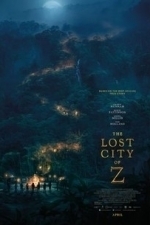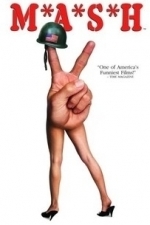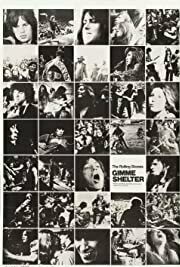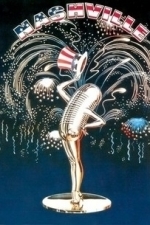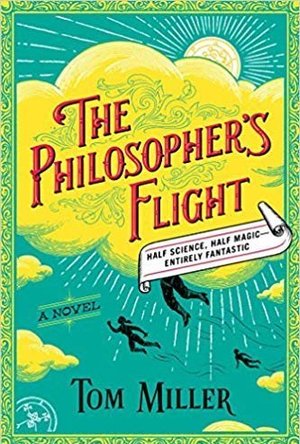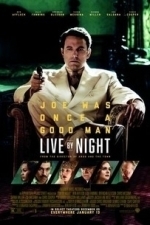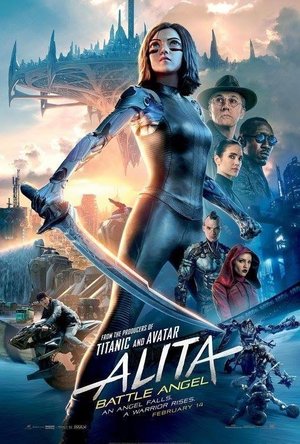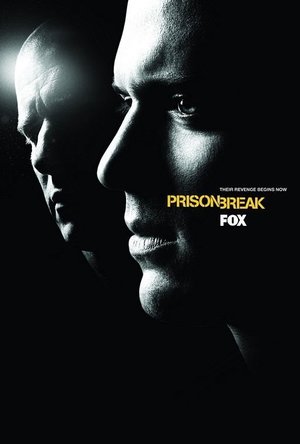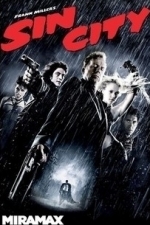Search
Search results
Jim Broadbent recommended McCabe & Mrs. Miller (1971) in Movies (curated)
Erika (17789 KP) rated The Lost City of Z (2017) in Movies
Jan 16, 2018
I had been waiting to see this film for months, but, when I watched it today, it left me disappointed. It was slow-moving, and Sienna Miller was painful to watch (as she is in most things). On the bright side, I felt like Charlie Hunnam and Robert Pattinson both did well in their parts, which made it slightly enjoyable.
Mimi Rogers recommended M*A*S*H (1970) in Movies (curated)
James Franco recommended Gimme Shelter (1970) in Movies (curated)
Olivier Assayas recommended Nashville (1975) in Movies (curated)
Bookapotamus (289 KP) rated The Philosopher's Flight in Books
May 29, 2018
For anyone who has been suffering withdrawal from the end of a certain magical boy wizard series, The Philosopher's Flight by Tom Miller is the perfect antidote! It's clever, and sharp, but also a quick read based on alternative history where special "powers" can do different things, and one boys journey to"fit in" this world where girls rule! The opposite sexism is interesting (women typically have the most refined powers and go to war, do the dangerous stuff, etc.) and Robert wants to do everything the women do - and we see if he attains that goal, while facing some pretty crazy "roadblocks" along the way.
I love stories that take me away to another place - get me out of reality and imagine what life would be like if things were "different". And this book does just that. It's very clever how it's pretty historically accurate, just with this twist of Sigilry, these signs and symbols drawn to move energy and ultimately produce some sort of effect (hovering/flying, restoring health, moving an object, sending messages). There are great stories of friendship, interesting characters, and stories of love as well. All wrapped up in a creative story of action, adventure and social-awareness.
There are a few "racy" scenes...so I'd recommend a more mature audience, but its fantastic all-around in general. I'm excited to see if the Philosopher Flies Again! Thanks NetGalley!
I love stories that take me away to another place - get me out of reality and imagine what life would be like if things were "different". And this book does just that. It's very clever how it's pretty historically accurate, just with this twist of Sigilry, these signs and symbols drawn to move energy and ultimately produce some sort of effect (hovering/flying, restoring health, moving an object, sending messages). There are great stories of friendship, interesting characters, and stories of love as well. All wrapped up in a creative story of action, adventure and social-awareness.
There are a few "racy" scenes...so I'd recommend a more mature audience, but its fantastic all-around in general. I'm excited to see if the Philosopher Flies Again! Thanks NetGalley!
Bob Mann (459 KP) rated Live By Night (2017) in Movies
Sep 29, 2021
“Sleep by day…”.
Ben Affleck’s new movie could best be described as “sprawling”. In both directing and writing the screenplay (based on a novel by Dennis Lehane), Affleck has aimed for a “Godfather” style gangster epic and missed: not missed by a country mile, but missed nonetheless.
Morally bankrupted by his experiences in the trenches, Joe Coughlin (Affleck) returns to Boston to pick and choose which social rules he wants to follow. Not sociopathic per se, as he has a strong personal code of conduct, but Coughlin turns to robbery walking a delicate path between the warring mob factions of the Irish community, led by Albert White (the excellent Robert Glenister from TV’s “Hustle”), and the Italian community, led by Maso Pescatore (Remo Girone). Trying to keep him out of jail is his father (“Harry Potter”’s Brendan Gleeson) who – usefully – is the Deputy Police Chief. Life gets complicated when he falls in love with White’s moll, Emma Gould (Sienna Miller). The scene is set for a drama stretching from Boston to the hot and steamy Everglades over a period of the next twenty years.
Although a watchable popcorn film, the choppy episodic nature of the movie is hugely frustrating, with no compelling story arc to glue all of the disparate parts together. The (often very violent) action scenes are very well done and exciting but as a viewer you don’t feel invested in a ‘journey’ from the beginning of the film to the (unsatisfactory) ending. In my experience it’s never a good sign when the writer considers it necessary to add a voiceover to the soundtrack, and here Affleck mutters truisms about his thoughts and motives that irritate more than illuminate.
The sheer volume of players in the piece (there are about three film’s worth in here) and the resulting minimal screen time given to each allows no time for character development. Unfortunately the result is that you really care very little about whether people live or die and big plot developments land as rather an “oh” than an “OH!”.
Affleck puts in a great turn as the autistic central character whose condition results in a cold, calculating demeanor and a complete lack of emotion reflecting on his face. Oh, hang on… no, wait a minute… sorry… I’ve got the wrong film…. I’m thinking about “The Accountant”. I don’t know whether he filmed these films in parallel. I generally enjoy Ben Affleck’s work (he was excellent in “The Town”) but for 95% of this film his part could have been completed by a burly extra with an Affleck mask on. In terms of acting range, his facial muscles barely get to a “2” on the scale. Given the double problem that he is barely credible as the “young man” returning mentally wounded from the trenches, then in my opinion he would have been better to have focused on the writing and directing and found a lead of the likes of an Andrew Garfield to fill Coughlin’s shoes.
That’s not to say there is not some good acting present in the rest of the cast’s all too brief supporting roles. Elle Fanning (“Trumbo”, “Maleficent”) in particular shines as the Southern belle Loretta Figgis: a religious zealot driving her police chief father (Chris Cooper, “The Bourne Identity”) to distraction. Cooper also delivers a star turn as the moral but pragmatic law-man.
Sienna Miller (“Foxcatcher”) delivers a passable Cork accent and does her best to develop some believable chemistry with the rock-like Affleck. Zoe Saldana (“Star Trek”) is equally effective as a Cuban humanitarian.
In summary, it’s sprawlingly watchable… but overall a disappointment, with Affleck over-reaching. One day we surely will get a gangster film the likes of another “Godfather”, “Goodfellas” or “Untouchables”. Although this has its moments, unfortunately it’s more towards the “Public Enemies” end of the genre spectrum.
Morally bankrupted by his experiences in the trenches, Joe Coughlin (Affleck) returns to Boston to pick and choose which social rules he wants to follow. Not sociopathic per se, as he has a strong personal code of conduct, but Coughlin turns to robbery walking a delicate path between the warring mob factions of the Irish community, led by Albert White (the excellent Robert Glenister from TV’s “Hustle”), and the Italian community, led by Maso Pescatore (Remo Girone). Trying to keep him out of jail is his father (“Harry Potter”’s Brendan Gleeson) who – usefully – is the Deputy Police Chief. Life gets complicated when he falls in love with White’s moll, Emma Gould (Sienna Miller). The scene is set for a drama stretching from Boston to the hot and steamy Everglades over a period of the next twenty years.
Although a watchable popcorn film, the choppy episodic nature of the movie is hugely frustrating, with no compelling story arc to glue all of the disparate parts together. The (often very violent) action scenes are very well done and exciting but as a viewer you don’t feel invested in a ‘journey’ from the beginning of the film to the (unsatisfactory) ending. In my experience it’s never a good sign when the writer considers it necessary to add a voiceover to the soundtrack, and here Affleck mutters truisms about his thoughts and motives that irritate more than illuminate.
The sheer volume of players in the piece (there are about three film’s worth in here) and the resulting minimal screen time given to each allows no time for character development. Unfortunately the result is that you really care very little about whether people live or die and big plot developments land as rather an “oh” than an “OH!”.
Affleck puts in a great turn as the autistic central character whose condition results in a cold, calculating demeanor and a complete lack of emotion reflecting on his face. Oh, hang on… no, wait a minute… sorry… I’ve got the wrong film…. I’m thinking about “The Accountant”. I don’t know whether he filmed these films in parallel. I generally enjoy Ben Affleck’s work (he was excellent in “The Town”) but for 95% of this film his part could have been completed by a burly extra with an Affleck mask on. In terms of acting range, his facial muscles barely get to a “2” on the scale. Given the double problem that he is barely credible as the “young man” returning mentally wounded from the trenches, then in my opinion he would have been better to have focused on the writing and directing and found a lead of the likes of an Andrew Garfield to fill Coughlin’s shoes.
That’s not to say there is not some good acting present in the rest of the cast’s all too brief supporting roles. Elle Fanning (“Trumbo”, “Maleficent”) in particular shines as the Southern belle Loretta Figgis: a religious zealot driving her police chief father (Chris Cooper, “The Bourne Identity”) to distraction. Cooper also delivers a star turn as the moral but pragmatic law-man.
Sienna Miller (“Foxcatcher”) delivers a passable Cork accent and does her best to develop some believable chemistry with the rock-like Affleck. Zoe Saldana (“Star Trek”) is equally effective as a Cuban humanitarian.
In summary, it’s sprawlingly watchable… but overall a disappointment, with Affleck over-reaching. One day we surely will get a gangster film the likes of another “Godfather”, “Goodfellas” or “Untouchables”. Although this has its moments, unfortunately it’s more towards the “Public Enemies” end of the genre spectrum.
Kirk Bage (1775 KP) rated Alita: Battle Angel (2019) in Movies
Jan 22, 2021
Robert Rodriguez is not a good director. He isn’t an especially good writer or producer either. This is the guy responsible for four Spy Kids films, that start below average and downgrade exponentially into excruciatingly awful. What he is pretty good at is ideas, and seeing the potential of something visually arresting and exciting. That is what led to the success of Sin City, arguably his best effort to date, because he saw how the comic book creations of Frank Miller could become live action and he made it happen.
Alita: Battle Angel is a similar deal. This time Yukito Kishiro’s early 90s manga creation is the inspiration. With James Cameron as producer, and the considerable talents of Christoph Waltz, Jennifer Connelly and Mahershala Ali onboard, it would have been pretty hard for even Rodriguez to mess this up entirely. Although at times he does seem to try, mostly by doing too much and making certain sections too busy and too confusingly cross-genre, like he is frantically trying to colour within the lines whilst using every felt-tip in the pack. A habit that means every now and again something great happens, but you may have missed it in all the background noise.
Compare this film, that just falls short of qualifying for my Bad Movie Triple Bill list, to Spielberg’s superior yet similarly busy Ready Player One. Both involve high concept future realities that are very tech and AI driven. Both make extensive use of CGI and vivid colour palettes. Both are frenetic and demand an audience pays attention in order to fully appreciate the storyline. The difference is that one zig-zags back and forth in tone and momentum, and one is razor sharp in moving us from one idea to the next on a perfect learning curve towards a satisfying climax and conclusion. Guess which one is which? This is why Spielberg is Spielberg and Rodriguez is… a hack.
That said, Alita as a character and concept is charming, and you do therefore find yourself at least wanting to discover her story. The action scenes are also quite electric, and the visuals are often breath-taking. But the whole is less than the sum of the parts here, and we are left with something that can only really exist in the same box as dozens of admirable sci-fi B-movies aimed at teenagers, such as The Maze Runner, Mortal Engines and The City of Ember. It also continues to prove the point alongside Ghost in the Shell and Speed Racer that Anime / Manga into live action is a very tricky business.
There is definitely an audience out there for this movie, and I dare say at some point I will be tempted to give it another watch. What is definitely worth watching however, is how James Cameron uses this as a stepping stone to perfecting virtual humans on the big screen. I am sure everyone involved learned a lot in that respect, so all is far from lost.
Alita: Battle Angel is a similar deal. This time Yukito Kishiro’s early 90s manga creation is the inspiration. With James Cameron as producer, and the considerable talents of Christoph Waltz, Jennifer Connelly and Mahershala Ali onboard, it would have been pretty hard for even Rodriguez to mess this up entirely. Although at times he does seem to try, mostly by doing too much and making certain sections too busy and too confusingly cross-genre, like he is frantically trying to colour within the lines whilst using every felt-tip in the pack. A habit that means every now and again something great happens, but you may have missed it in all the background noise.
Compare this film, that just falls short of qualifying for my Bad Movie Triple Bill list, to Spielberg’s superior yet similarly busy Ready Player One. Both involve high concept future realities that are very tech and AI driven. Both make extensive use of CGI and vivid colour palettes. Both are frenetic and demand an audience pays attention in order to fully appreciate the storyline. The difference is that one zig-zags back and forth in tone and momentum, and one is razor sharp in moving us from one idea to the next on a perfect learning curve towards a satisfying climax and conclusion. Guess which one is which? This is why Spielberg is Spielberg and Rodriguez is… a hack.
That said, Alita as a character and concept is charming, and you do therefore find yourself at least wanting to discover her story. The action scenes are also quite electric, and the visuals are often breath-taking. But the whole is less than the sum of the parts here, and we are left with something that can only really exist in the same box as dozens of admirable sci-fi B-movies aimed at teenagers, such as The Maze Runner, Mortal Engines and The City of Ember. It also continues to prove the point alongside Ghost in the Shell and Speed Racer that Anime / Manga into live action is a very tricky business.
There is definitely an audience out there for this movie, and I dare say at some point I will be tempted to give it another watch. What is definitely worth watching however, is how James Cameron uses this as a stepping stone to perfecting virtual humans on the big screen. I am sure everyone involved learned a lot in that respect, so all is far from lost.
Bird (1704 KP) rated Prison Break in TV
Nov 29, 2024
A Riveting Ride with a Few Bumps:
Prison Break is a show that deserves its reputation as one of the most exciting and original dramas of its time. While not without its flaws, the series delivers a thrilling mix of suspense, clever plotting, and character-driven storytelling that keeps you invested throughout its run. With an intriguing premise and a solid cast, it’s easy to see why Prison Break has garnered such a devoted fanbase.
The standout feature of Prison Break is undoubtedly its core premise. The idea of a structural engineer, Michael Scofield (played by Wentworth Miller), intentionally landing himself in prison to break out his falsely accused brother, Lincoln Burrows (Dominic Purcell), is fascinating. The execution of Michael’s plan, complete with hidden clues in his tattooed body map, is both ingenious and fun to watch unfold. The first season, in particular, excels at building tension as Michael carefully navigates the treacherous world of Fox River Penitentiary, laying the groundwork for the escape. It’s a slow burn at times, but the payoff is worth it.
The cast is another highlight. Wentworth Miller’s calm and calculated performance as Michael is captivating, and Dominic Purcell brings a solid, if sometimes overly stoic, presence to Lincoln. Robert Knepper steals the show as Theodore "T-Bag" Bagwell, delivering a performance that’s equal parts chilling and oddly charismatic. Supporting characters like Sucre (Amaury Nolasco) and Sara Tancredi (Sarah Wayne Callies) add warmth and heart to balance the often dark and gritty tone of the series.
However, the show isn’t without its flaws. While the first season is nearly airtight in its storytelling, later seasons can feel uneven. The second season’s shift to a manhunt format is exhilarating but occasionally stretches believability, with some plot twists feeling more like conveniences than organic developments. As the series progresses, the introduction of larger conspiracies and shadowy organisations adds scale but also detracts from the grounded tension that made the first season so compelling. By the time you reach the third and fourth seasons, the narrative occasionally veers into melodrama and over-the-top scenarios, which may pull some viewers out of the experience.
The pacing can also be hit or miss. While some episodes are packed with heart-pounding tension, others feel like filler, particularly in the later seasons. The show sometimes leans too heavily on cliffhangers, which can feel manipulative rather than earned. Additionally, while the cast is strong overall, some characters, like Lincoln, can come across as one-dimensional at times, and a few storylines feel underdeveloped or rushed.
That said, Prison Break is undeniably entertaining. Its gritty atmosphere, clever plotting, and high-stakes drama make it a standout among action-thrillers. The relationships between characters, particularly Michael and Lincoln’s unshakable brotherly bond, give the series emotional weight. Even with its flaws, the show’s twists and turns keep you engaged, and there’s a palpable sense of satisfaction when long-brewing plans come to fruition.
In summary, Prison Break is a fantastic watch, especially for fans of crime dramas and action-packed thrillers, though it occasionally falters under the weight of its ambition. It’s an 8/10 for me—hugely enjoyable, if not always perfect. While it may not stick the landing as well as it starts, the journey is more than worth taking.
The standout feature of Prison Break is undoubtedly its core premise. The idea of a structural engineer, Michael Scofield (played by Wentworth Miller), intentionally landing himself in prison to break out his falsely accused brother, Lincoln Burrows (Dominic Purcell), is fascinating. The execution of Michael’s plan, complete with hidden clues in his tattooed body map, is both ingenious and fun to watch unfold. The first season, in particular, excels at building tension as Michael carefully navigates the treacherous world of Fox River Penitentiary, laying the groundwork for the escape. It’s a slow burn at times, but the payoff is worth it.
The cast is another highlight. Wentworth Miller’s calm and calculated performance as Michael is captivating, and Dominic Purcell brings a solid, if sometimes overly stoic, presence to Lincoln. Robert Knepper steals the show as Theodore "T-Bag" Bagwell, delivering a performance that’s equal parts chilling and oddly charismatic. Supporting characters like Sucre (Amaury Nolasco) and Sara Tancredi (Sarah Wayne Callies) add warmth and heart to balance the often dark and gritty tone of the series.
However, the show isn’t without its flaws. While the first season is nearly airtight in its storytelling, later seasons can feel uneven. The second season’s shift to a manhunt format is exhilarating but occasionally stretches believability, with some plot twists feeling more like conveniences than organic developments. As the series progresses, the introduction of larger conspiracies and shadowy organisations adds scale but also detracts from the grounded tension that made the first season so compelling. By the time you reach the third and fourth seasons, the narrative occasionally veers into melodrama and over-the-top scenarios, which may pull some viewers out of the experience.
The pacing can also be hit or miss. While some episodes are packed with heart-pounding tension, others feel like filler, particularly in the later seasons. The show sometimes leans too heavily on cliffhangers, which can feel manipulative rather than earned. Additionally, while the cast is strong overall, some characters, like Lincoln, can come across as one-dimensional at times, and a few storylines feel underdeveloped or rushed.
That said, Prison Break is undeniably entertaining. Its gritty atmosphere, clever plotting, and high-stakes drama make it a standout among action-thrillers. The relationships between characters, particularly Michael and Lincoln’s unshakable brotherly bond, give the series emotional weight. Even with its flaws, the show’s twists and turns keep you engaged, and there’s a palpable sense of satisfaction when long-brewing plans come to fruition.
In summary, Prison Break is a fantastic watch, especially for fans of crime dramas and action-packed thrillers, though it occasionally falters under the weight of its ambition. It’s an 8/10 for me—hugely enjoyable, if not always perfect. While it may not stick the landing as well as it starts, the journey is more than worth taking.
Gareth von Kallenbach (980 KP) rated Sin City (2005) in Movies
Aug 14, 2019
In a dazzling blend of muted color, violence, and eroticism Frank Millers graphic novel Sin City has burst upon the screen with a visual style that is as diverse as the star studded cast that drives it.
Set in the fictional Basin City, the film is a series of segments that weave in and around each other to tell various stories and side plots without a clear cut beginning and end as the conclusion of one segment often mirrors portions of the events in another.
While the film does not have a linear plot in the traditional sense, each segment is a snapshot of life in Basin City and how it is viewed by the various people that dwell within. It does not take a genius to see that the city is rife with all manner of unsavory characters from child molesters to cannibals. Basin City is also a place where people are not always the sum of their parts as a violent and disfigured thug named Marv (Mickey Rourke) can show humanity and compassion as he attempts to avenge those who were wronged. It is a place where a person with a dubious past and a new face named Dwight (Clive Owen), is town between the life he left behind and his desire to protect those who are in danger.
The film is chocked full of dialogue that is reminiscent of classic pulp novels and comics of the 40’s and 50’s where characters were often as two dimensional as the pages in which their exploits were chronicled. While this at first seems awkward and hokey it tends to grow on you as it is an accurate reflection of the locales and inhabitants that comprise the city.
While most of the film is shot in a black and white style, there are flashes of color that make a gripping contrast to the usually blank characters. Examples of which are seen in many of the films violent action sequences where blood and other gore are used for artistic effect. In one example, graphic shooting segments are left in a muted black and white allowing us to see the gore in a muted sense. The impact of the scene is not lost but it is rendered in an artistic and unique manner that is amazing to see. While you should be horrified at what you see, you find yourself captivated by the clever color and camera work that is used to render the scene. At other times, the crimson color of blood is used to emphasize a scene and illustrate and illuminate a character.
If this sounds confusing, it is due to the fact that to many “Sin City”, is a film that is a unique looking film, that has a pacing and style all its own, and does not play by the traditional rules for a film. While films such as “Heavy Metal” and “Sky Captain and the World of Tomorrow” have brought graphic novels and visually unique pulp stories to the screen, it is the constant adherence to the source material, and directors Robert Rodriguez, Frank Miller, and Quentin Tarantinos ability to blend their unique styles seamlessly that makes this film interesting.
The action of the film is very well choreographed and despite being very, very graphic in places, it nonetheless entertains and rarely seems gratuitous. The film also has a surprising amount of comedy as there were several moments that caused the audience at my press screening to erupt.
While it does not offer much in the way of plot or acting, the performances are appropriate to the characters and settings .The all-star cast does a great job in conveying the motivations of their characters as the audience is given just what the need to know about a character to make the segments work.
While the film may not appeal to a mass audience due to the unique look and structure of the film, fans of Tarantino and Rodriguez are likely to embrace this film which should likely result in further adventures in Basin City sometime in the near future.
Set in the fictional Basin City, the film is a series of segments that weave in and around each other to tell various stories and side plots without a clear cut beginning and end as the conclusion of one segment often mirrors portions of the events in another.
While the film does not have a linear plot in the traditional sense, each segment is a snapshot of life in Basin City and how it is viewed by the various people that dwell within. It does not take a genius to see that the city is rife with all manner of unsavory characters from child molesters to cannibals. Basin City is also a place where people are not always the sum of their parts as a violent and disfigured thug named Marv (Mickey Rourke) can show humanity and compassion as he attempts to avenge those who were wronged. It is a place where a person with a dubious past and a new face named Dwight (Clive Owen), is town between the life he left behind and his desire to protect those who are in danger.
The film is chocked full of dialogue that is reminiscent of classic pulp novels and comics of the 40’s and 50’s where characters were often as two dimensional as the pages in which their exploits were chronicled. While this at first seems awkward and hokey it tends to grow on you as it is an accurate reflection of the locales and inhabitants that comprise the city.
While most of the film is shot in a black and white style, there are flashes of color that make a gripping contrast to the usually blank characters. Examples of which are seen in many of the films violent action sequences where blood and other gore are used for artistic effect. In one example, graphic shooting segments are left in a muted black and white allowing us to see the gore in a muted sense. The impact of the scene is not lost but it is rendered in an artistic and unique manner that is amazing to see. While you should be horrified at what you see, you find yourself captivated by the clever color and camera work that is used to render the scene. At other times, the crimson color of blood is used to emphasize a scene and illustrate and illuminate a character.
If this sounds confusing, it is due to the fact that to many “Sin City”, is a film that is a unique looking film, that has a pacing and style all its own, and does not play by the traditional rules for a film. While films such as “Heavy Metal” and “Sky Captain and the World of Tomorrow” have brought graphic novels and visually unique pulp stories to the screen, it is the constant adherence to the source material, and directors Robert Rodriguez, Frank Miller, and Quentin Tarantinos ability to blend their unique styles seamlessly that makes this film interesting.
The action of the film is very well choreographed and despite being very, very graphic in places, it nonetheless entertains and rarely seems gratuitous. The film also has a surprising amount of comedy as there were several moments that caused the audience at my press screening to erupt.
While it does not offer much in the way of plot or acting, the performances are appropriate to the characters and settings .The all-star cast does a great job in conveying the motivations of their characters as the audience is given just what the need to know about a character to make the segments work.
While the film may not appeal to a mass audience due to the unique look and structure of the film, fans of Tarantino and Rodriguez are likely to embrace this film which should likely result in further adventures in Basin City sometime in the near future.

